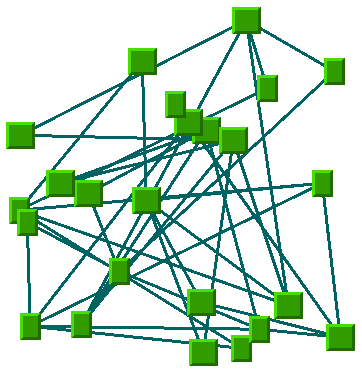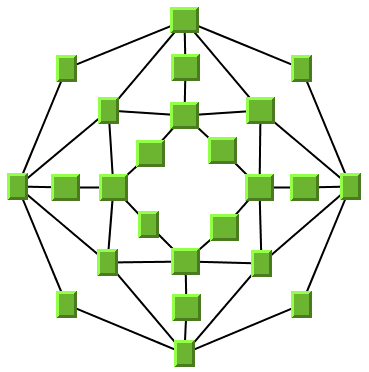Graph layout is a set of algorithms that
optimize the display of nodes and links with respect to each other
in graphs such as network topologies for telecommunications
networks and systems management applications.
Many types of complex business data can best
be visualized as a set of nodes and interconnecting links, more
commonly called a graph or a network. Examples of graphs include
business organization charts, workflow diagrams, telecom network
displays, and genealogical trees. Whenever these graphs become
large or heavily interconnected, it becomes difficult to see the
relationships between the various nodes and links (the “edges”).
This is where the Rogue Wave® graph layout algorithms help.
Graph layout provides high-level,
ready-to-use relationship visualization services. It allows you to
take any “messy” graph and apply a sophisticated graph layout
algorithm to rearrange the positions of the nodes and links. The
result is a more readable and understandable picture.
Take a look at two sample drawings of the
same graph.
Here, no
formal layout algorithm was used. The nodes were placed
randomly when the graph was drawn.

|
Using
one of the layout algorithms provided with the product, the
following drawing was obtained.

|
In the second drawing, the layout algorithm
has distributed the nodes quite uniformly, avoiding overlapping
nodes and showing the symmetries of the graph. This drawing
presents a much more readable layout than the first drawing.